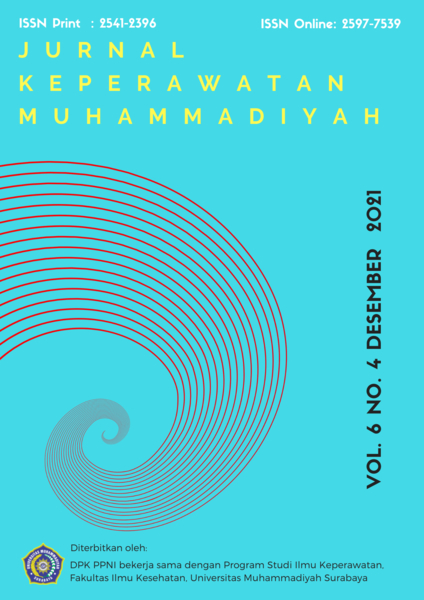Pengaruh Senam Ling Tien Kung Terhadap Peningkatan Keseimbangan Tubuh Pada Lansia
DOI:
https://doi.org/10.30651/jkm.v6i4.10486Keywords:
ling tien kung, body balance, elderlyAbstract
Objective: Decreased body balance and increased risk of falling occur in the elderly population around 30-50% every year. Currently a partial exercise program is a solution given to strengthen certain muscles to support balance. With increasing age in the elderly, there will be a decrease in several components of the body system so that it will cause a decrease in balance. Prevention to reduce the risk of falling is to improve balance with ling tien kung exercise.
Methods: This article uses a one group pretest posttest design with 30 participants as the subject of ling tien kung gymnastics which is divided into two groups, namely the pretest group (functional reach test and time up and go test before doing ling tien kung exercise) and the posttest group (functional reach test and time up and go after doing ling tien kung exercise for 1 month (8x), 2x in 1 week with 45 minutes). Data is collected and then analyzed statistically
Results: The results of the normality test of the data on the balance variable with the Functional Reach Test (FRT) and the balance with the Time Up and Go Test (TUG) all showed p>0.05, so the data from this study were normally distributed. The results of the paired difference test with the paired t-test showed a balance of pre-post Functional Reach Test (FRT) with a significance value of 0.000 and a balance of pre-post Time Up and Go Test (TUG) with a significance value of 0.000. Because both showed a p value <0.05, there was a significant difference before and after the Ling Tien Kung exercise
Conclusion: Â Â Ling Tien Kung exercise which is done within one month (8x), 2x a week for 45 minutes in the elderly can improve balanceReferences
Af’idah, Frida; Dewi, Setya; Hadhisuyatmana, Setho (2012), Studi risiko jatuh melalui pemeriksaan dynamic gait index (DGI) pada lansia di Panti Werdha Hargodedali Surabaya, Jurnal UNAIR 2 (4-6).
Caixeta et al. 2012. Cognitive Processing and Body Balance in Elderly Subjects With Vestibular Dysfunction. Brazilian Journal of Otorhinolaryngology, Vol.78 (2): 87-95.
Gearlan. 2010. The Role of Visual Vestibular and Somatosensory Sistem in Postural Balance [Thesis]. Las Vegas: University of Nevada.
Nugroho, 2014. Keperawatan Gerontik dan Geriatrik Edisi 3. Jakarta: EGC.
Maryam dkk. 2010. Buku Panduan Bagi Kader Posbindu Lansia Jakarta: CV.Trans Info Media.
Means et al. 2005. Balance, Mobility and Falls Among Community Dwelling Elderly Person: Effect of A Rehabilitation Exercise Program. Lippicoott William and Wilkins, American Journal of Physical Medicine Rehabilitation Vol. 84 (4): 238 – 280.
Utomo dkk. 2012. Peningkatan Fleksibilitas dan Keseimbangan Otot Lansia Melalui Senam Mandiri. Journal Terpadu Ilmu Kesehatan, Hlm. 1 – 94.
Vetrayan J, Rasid M S, Paulraj S J. 2013. Normative Study of Postural Stability in Standing for Different In Malaysia Measure by Functional Reach Test. Middle-East Journal of Scientific Research Vol. 14 (5) : 656 – 661.
Watson and Black. 2008. Vestibular Disorder Association page 5 of 9.
Downloads
Published
Issue
Section
License
- Penulis tetap memegang hak atas karyanya dan memberikan hak publikasi pertama kepada jurnal ini yang secara simultan karya tersebut dilisensikan di bawah:Â Creative Commons Attribution-ShareAlike 4.0 International (CC BY-SA 4.0)













